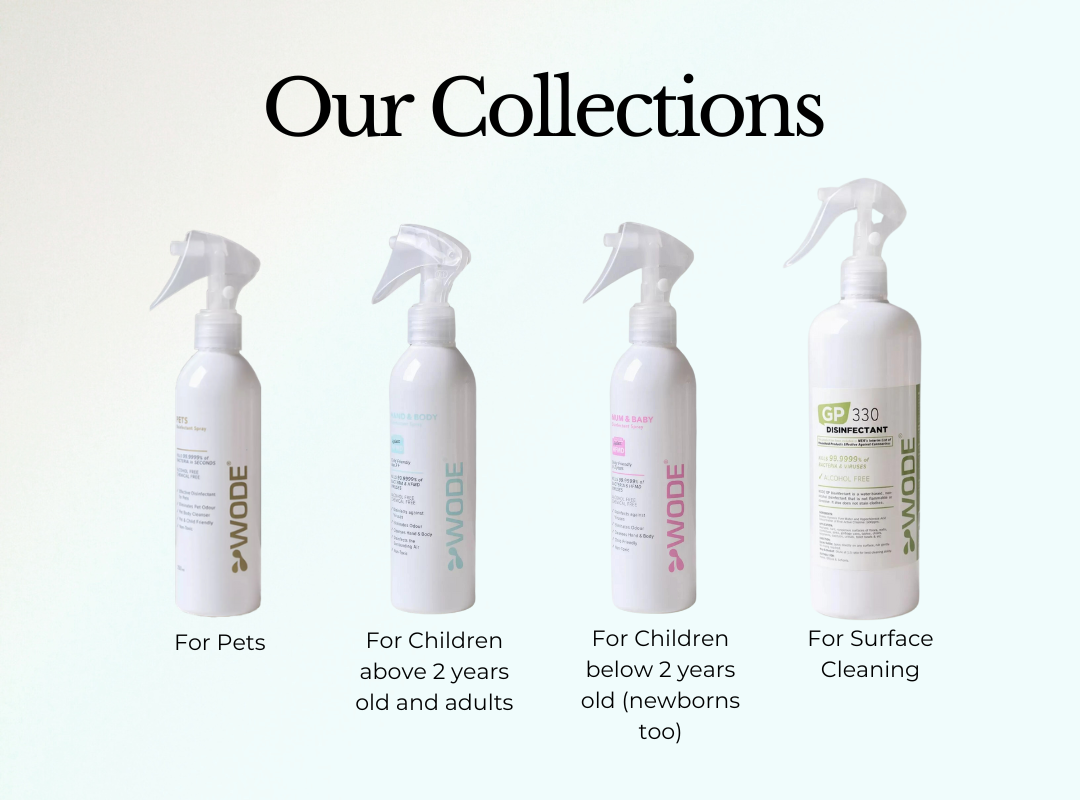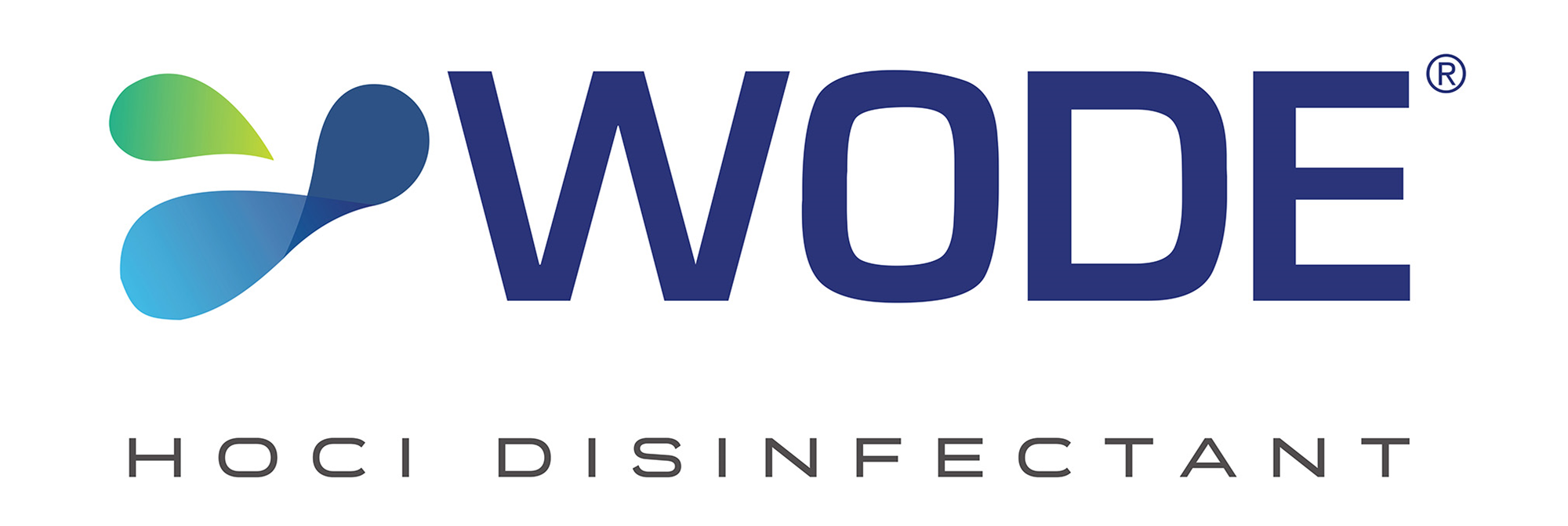The Hypochlorous Acid Story
Aug 28,2023 | WODE Disinfectants
If you ask anybody on the street whether they know what hypochlorous acid is, chances are most have never heard of this substance before. But did you know that the first discovery of hypochlorous acid was almost 200 years ago?
Early 19th-20th century: 1834-1920s
Hypochlorous acid was first discovered by Antoine Jerome Balard, a French chemist, in 1834. By the early 20th century, medical professionals had recognized the antiseptic functions of hypochlorous acid, leading to its use in disinfecting soldiers' wounds during World War One. Additionally, medical professionals recognized how hypochlorous acid could kill bacteria in fluids, contribute to environmental sanitation, and treat conditions like diphtheria, scarlet fever, and gangrene.

Excerpt from the journal article “Antiseptic Action of Hypochlorous Acid and its Application to Wound Treatment”
Middle to late 20th century: 1940s-80s
In the 1940s, London hospitals used acidified hypochlorite solutions in aerosol form (which contain a considerable amount of free hypochlorous acid molecules) to combat airborne pathogens in the air and prevent infections. Decades later, research discovered that hypochlorous acid is naturally produced by the human body and used by the body to fight against pathogens.
In 1950, electrolyzed water (another name for hypochlorous acid) was used in the agriculture field. It was also later used in drinking water treatment and wastewater treatment in the 1980s. Around the same time, Japan also utilized it as sanitation water for its food sector. By this period, more researchers started to explore electrolyzed water as an alternative, safe sanitizer/disinfectant for food and other applications.
21st century to now: 2000s onwards
Hypochlorous acid gains further recognition in the 2000s and became more well-known. In a 2008 document “Guidance for Industry: Guide to Minimize Microbial Food Safety Hazards of Fresh-cut Fruits and Vegetables”, the FDA acknowledged hypochlorous acid as an antimicrobial agent for processing water used to sanitize fruits and vegetables. In 2017, the FDA officially authorized hypochlorous acid for food contact, allowing it to be used as an antimicrobial agent for preparing produce and meat. The EU also authorized the use of hypochlorous acid in 2021 to be used in biocides of type 1,2,3,4 and 5. This means that hypochlorous acid can be used for human hygiene (products that come into contact with the skin), animal hygiene, surface disinfection, and treating drinking water. Medical professionals also turned to using hypochlorous acid during the Covid-19 pandemic, as an alternative disinfectant that could be effective against Covid-19.

"Disinfecting table from COVID-19" by Eco Bear Biohazard Cleaning Co. is licensed under CC BY 2.0.
Although hypochlorous acid is safe and works fantastically as an antiseptic and a disinfectant, its limited shelf life (48-72 hours) has hindered the wide adoption and commercialization of hypochlorous acid. However, this issue has been addressed by recent technological advancements, which managed to extend the shelf life of hypochlorous acid to at least a year.
While many hypochlorous acid disinfectants have a shelf life of a year, WODE’s hypochlorous acid disinfectants last twice as long—up to two years. WODE is the only local brand in Singapore that has the longest shelf life for its hypochlorous acid disinfectants. Furthermore, WODE has a wide range of disinfectants for differing needs. We have disinfectants designed for newborns, young children, adults, and even pets. Explore our collections and find the right disinfectant for you!

References
Aniyyah, M. N., Idhamnulhadi, Z., Shah, A. A., Shakirah, H. L., Suhaila, A., Norazlina, H., & Najwa, M. H. (2022, May). Electrolysis Study Effect on Electrolyzed Water as Disinfectant and Sanitizer. In Journal of Physics: Conference Series (Vol. 2266, No. 1, p. 012004). IOP Publishing.
Beattie, J. M., Lewis, F. C., & Gee, G. W. (1917). Hypochlorous Solution Electrically Produced From Hypertonic Saline as a Disinfectant for Septic Wounds: and for the Throat in Diphtheria, Scarlet Fever, Etc. British Medical Journal, 1(2930), 256.
Chaudhary, S. (2021, June 24). HOCl emerges as first line of defence in fight against Covid . ETHealthworld.com. https://health.economictimes.indiatimes.com/news/health-it/hocl-emerges-as-first-line-of-defence-in-fight-against-covid/83781381
Elford, W. J., & Van Den Ende, J. (1945). Studies on the Disinfecting Action of Hypochlorous Acid Gas and Sprayed Solution of Hypochlorite against Bacterial Aerosols. Epidemiology & Infection, 44(1), 1-14.
Food and Drug Administration. (n.d.). Inventory of Effective Food Contact Substance (FCS) Notifications. Food and Drug Administration. https://www.cfsanappsexternal.fda.gov/scripts/fdcc/index.cfm?set=fcn&id=1811
Office of Food Safety, Guidance for Industry: Guide to Minimize Microbial Food Safety Hazards of Fresh-cut Fruits and Vegetables (2008). College Park, MD; U.S. Dept. of Health and Human Services, Food and Drug Administration, Center for Food Safety and Applied Nutrition. Retrieved August 28, 2023, from https://www.fda.gov/regulatory-information/search-fda-guidance-documents/guidance-industry-guide-minimize-microbial-food-safety-hazards-fresh-cut-fruits-and-vegetables.
Smith, J. L., Drennan, A. M., Rettie, T., & Campbell, W. (1915). Experimental Observations on the Antiseptic Action of Hypochlorous Acid and its Application to Wound Treatment. British Medical Journal, 2(2847), 129.
The European Commission, COMMISSION IMPLEMENTING REGULATION (EU) 2021/347 of 25 February 2021 approving active chlorine released from hypochlorous acid as an active substance for use in biocidal products of product-types 2, 3, 4 and 5 . Official Journal of European Union. Retrieved August 28, 2023, from https://eur-lex.europa.eu/eli/reg_impl/2021/347/oj.
The European Commission, Commission Implementing Regulation (EU) 2021/365 of 26 February 2021 approving active chlorine released from hypochlorous acid as an active substance for use in biocidal products of product-type 1. Official Journal of European Union. Retrieved August 28, 2023, from https://eur-lex.europa.eu/legal-content/EN/TXT/?uri=CELEX%3A32021R0365&qid=1614768957632.
Williams, J., Rasmussen, E., Robins, L., & Nguyen, U. (2017). Hypochlorous Acid: Harnessing an Innate Response. The Infection Prevention Strategy (TIPS), 1-9.
Yan, P., Daliri, E. B. M., & Oh, D. H. (2021). New Clinical Applications of Electrolyzed Water: A Review. Microorganisms, 9(1), 136.



